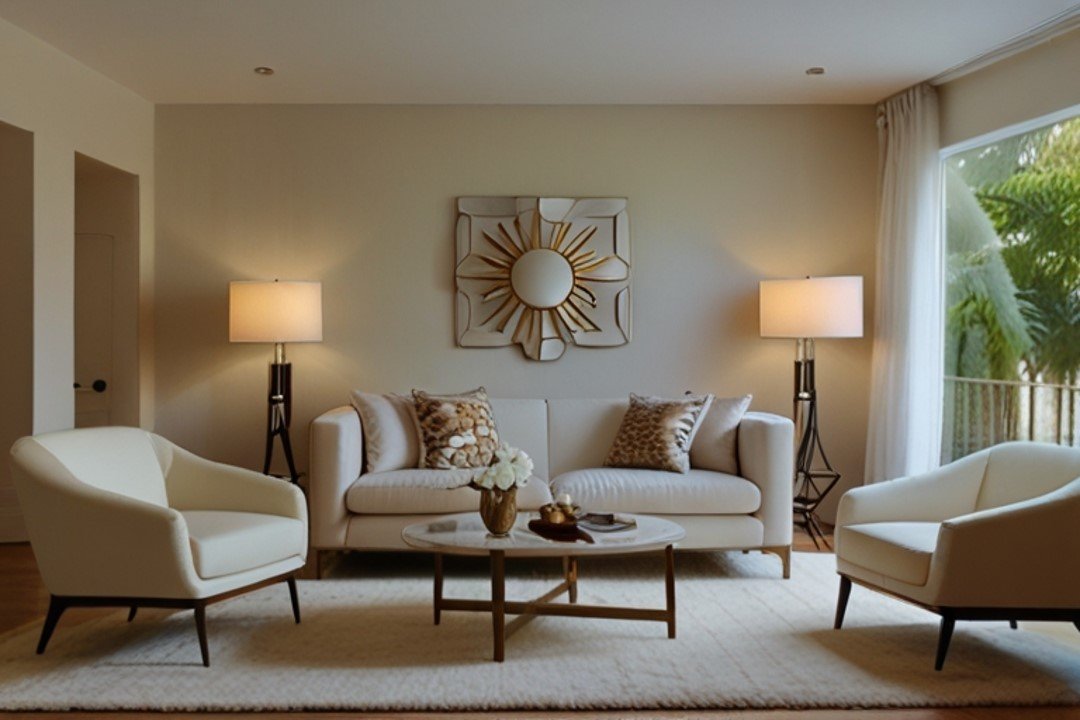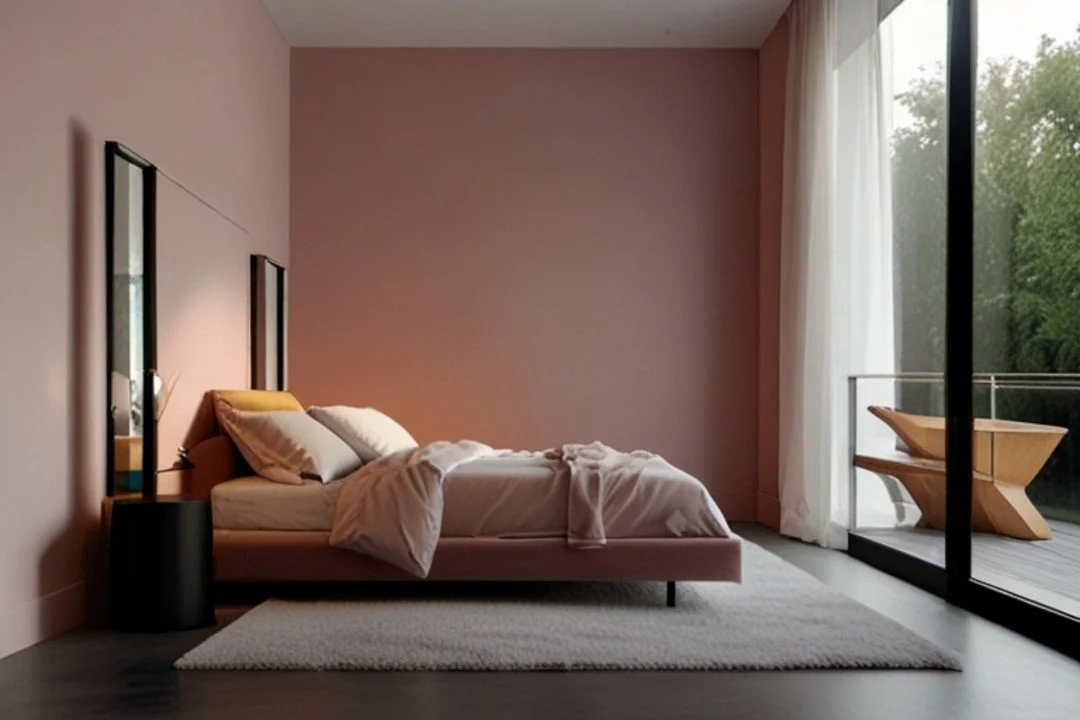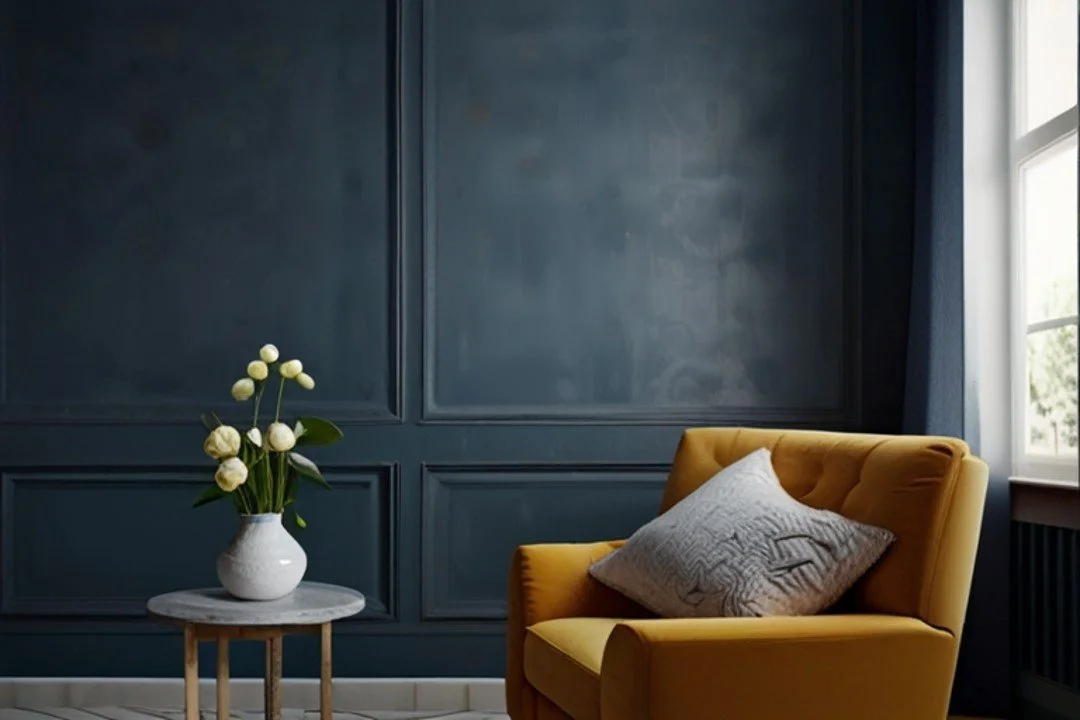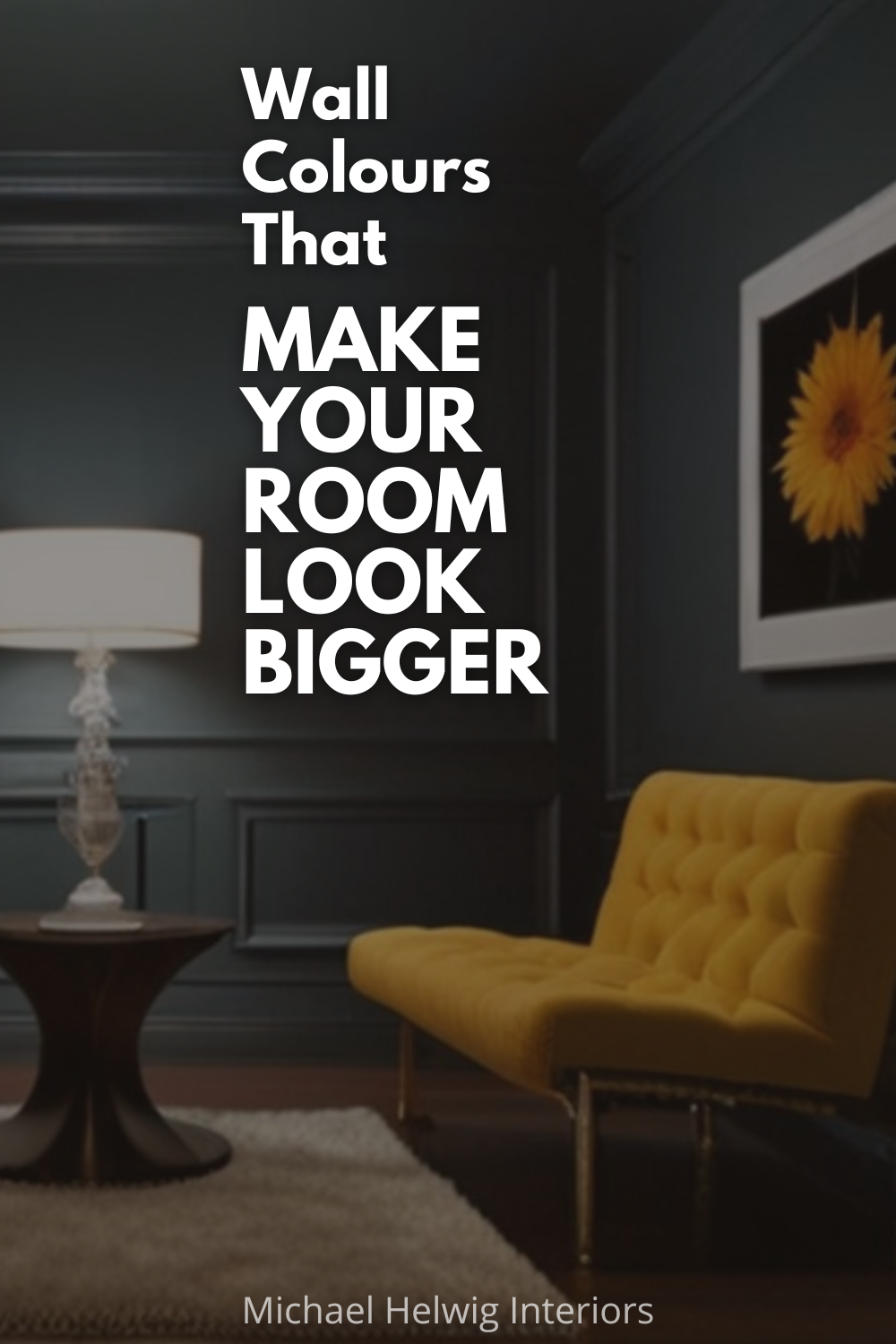By Tomasz Rezik
Do you want to know the secret tip to make a small house look bigger? One of the things that most homeowners overlook when redoing their homes is the colour palette. The colour palette that you choose for your home plays an important role in tricking the brain into thinking that the room is bigger than it is.
You may have a misconception that your smaller house lacks comfort and space, but the reality is it can be made to look spacious and airy if you choose your colour palette wisely.
If you’re unfamiliar with this secret trick, this article is here to help you. And, if you are looking for professional help for painting your home, you can visit https://dupaint.com.au/ for expert guidance.
Now, let’s take a detailed look at the power of choosing the right colour palette for your home:
1. The Power of Light Colours
Have you ever entered a room and instantly felt congested and claustrophobic? Do you know why some rooms look more spacious than others even though the surface area is the same? Well, most expert painters suggest that painting your walls with lighter colours instantly makes it look bigger.
The science behind how light colours make the room look bigger is based on the simple theory of reflection.
Colours like whites and pastels reflect more light compared to darker colours, making the spaces feel brighter and more open.
Since there is more brightness, there will be less shadow, which keeps the room from looking cramped.
Light colours also create the illusion of making walls look further away, helping visually expand the space and create a sense of openness and airiness.
The right colour palette can make a huge impact that you can see and feel if you have a smaller room.
Must-try colour palettes:
Here are the top colour palettes to make your tiny room look bigger:
Crisp whites: If you like the feel of breezy, airy rooms, going crisp white for the interior walls is a great choice. Rooms painted white naturally make the room look brighter, giving it the illusion of more space.
Gentle creams and off-whites: If want a bit more saturation in your room's colour palette, gentle creams and off-whites are good choice. These classic colours are what most folks choose for their homes when they want to make them look bigger and brighter but don’t want to go too extreme stark with bright whites.
Mint green: Mint green is a great choice for people who are not big fans of whites and creams but still want a light colour for their room. Mint green has a fuller colour hue, but light easily bounces off it, making the room look bigger.
Blush pink: Blush pink may not be for everyone, but you can give it a try if you want to make your room look bigger, with a cheerful vibe. Pinks are quite versatile and depending on the lightness level you’re looking for; you can go in the direction of peach/beige to get a bright look.
Pale blue: Pale blue is another common yet safe choice if you are not in the mood for experimenting. This colour makes you feel like you are under the sky even while staying indoors. Blues can also be considered a neutral because they pair very well with many colours across the spectrum. Try pairing pale blues with whites, for a soft, coastal look, or more saturated colours like green and orange, if you’re interested in more energized contrast.
2. Going Dark (Strategically)
You are wrong if you think dark colours are completely off-limits for small rooms. Contrary to what many people believe, using dark colours strategically can make your room look larger too.
Since dark colours create depth in a room, strategically using them can really make a difference in how large your room appears.
Here are a few ways to use dark colours for smaller rooms:
To add contrast: pairing dark-coloured walls with light-coloured furniture automatically makes a room look bigger. The light furniture stands out against the dark walls, breaking up the space and preventing it from feeling enclosed or cramped. This visual distinction draws your eye across the room, making it appear more open and spacious.
To create focus: Dark-coloured walls can act as a stunning backdrop for the room while emphasising focal points like artwork or unique architectural features. The contrast between the dark walls and the lighter or more vibrant focal points draws the eye directly to them, highlighting their importance and creating a dramatic visual effect. This emphasis can add depth and interest to the space, making it feel more dynamic and engaging.
However, if you use a dark colour to make your room look larger, it’s important to also focus on the room's lighting- which is how you’ll create reflection. Use a mix of overhead, table & floor lamps, and accent lighting to banish shadows while enhancing focus to those special features.
Must-try colour palettes:
Navy blue: As I mentioned before, blues can be seen as a “neutral” for a lot of different size rooms. Even a darker blue hue like navy, when lit properly, will make a room feel large. Tip: Try colour washing your room. Paint the walls, trim and ceiling all the same colour to create a consistent field of view and watch how large the room can look. This technique works great for dark colours like navy blue, grey and even black. (Yes, a colour washed, floor to ceiling black room, can absolutely look expansive!)
Charcoal grey: Most people believe that charcoal grey makes a room look dark and gloomy. However, they fail to realize that the colour can add much-needed dimension to a small room. Charcoal grey can provide a striking contrast to lighter colours, which helps to define architectural features and boundaries more clearly. This definition can make the room feel more structured and organized, which makes it look larger. Tip: To take it a step further, incorporate furniture with upholstery in the same base charcoal colour—like a sofa and chairs in a living room—or bedding in a bedroom. This doubling down on the colour will cut down on visual clutter. The similarity to the furniture and the wall colour will make the room feel bigger.
Forest green: Forest green can bring the feeling of nature and the outdoors into your home. This can create a calming and expansive feeling in your rooms. This psychological effect can make the room feel more open and airier. Tip: Incorporate natural materials like wood furniture, plants, and natural textiles to complement a forest green wall colour and enhance the connection to the outdoors. This biophilic design approach can make the room feel more spacious and inviting.
3. The Importance of Paint Finish
While talking about the different colours that make a room look larger, you must not forget about the finish of the paint.
As much as the colour plays a pivotal role in making a small room look bigger, the finish is also equally important since it impacts how light reflects off the wall.
Let’s get into a few popular finishes and talk about each in terms of light reflection, texture and how they could influence how large a room could look if you use them.
Matte or Flat Finish:
Light Reflection: Matte finishes absorb light rather than reflect it, which can make your walls recede to give a softer, more uniform look.
Texture: This finish hides imperfections well, creating a smooth and even appearance.
Effect on Size: Matte finishes can make a room feel cozy and intimate, but they might not enhance the sense of space as much as glossier finishes.
Eggshell Finish:
Light Reflection: Eggshell has a slight sheen, reflecting more light than matte but less than satin or gloss.
Texture: It provides a smooth, soft look and can hide some wall imperfections.
Effect on Size: The subtle sheen can add a bit of dimension and light reflection, making your room feel slightly larger while still being cozy.
Satin Finish:
Light Reflection: Satin finishes reflect more light, adding a gentle glow to your walls.
Texture: It has a velvety appearance and can show imperfections more than matte or eggshell.
Effect on Size: There’s more light reflection, which helps to brighten your room, creating a sense of openness and making it feel more spacious.
Semi-Gloss Finish:
Light Reflection: Semi-gloss reflects a lot of light, giving your walls a shiny look.
Texture: This finish will definitely highlight wall imperfections more than satin or eggshell but is durable and easy to clean.
Effect on Size: The high reflectivity can make your room look brighter and more open, which can trick your eye into believing you have a larger space.
High-Gloss Finish:
Light Reflection: High-gloss finishes reflect the most light, creating a mirror-like effect on your walls.
Texture: It accentuates imperfections but provides a striking, modern look.
Effect on Size: The intense light reflection can make your room feel significantly brighter and more expansive. But be warned, it can also be overwhelming if overused in a small space.
Additional Tips:
Combining Finishes: Using a combination of finishes can enhance the perception of space. For example, using a satin or semi-gloss finish on trim and a matte or eggshell finish on walls can create contrast and depth.
Ceilings and Trim: Painting the ceiling and trim in a lighter color with a slight sheen (such as satin) can draw the eye upward and outward, making the room feel taller and more spacious.
Consistent Sheen: Maintaining a consistent sheen throughout the room can create a seamless look, while varying sheens can add visual interest and help define different areas within the space.
4. Clever Contrasts
Clever use of contrasting colours on the walls of your home can also make it look larger than it is.
One great way to do this is by contrasting the colours of the doors, mouldings, and trims with that of the wall.
No matter what colour you choose for the walls, white is a timeless choice for doors, ceilings, and trim. It adds contrast and creates visual separation, drawing attention and making spaces feel larger. And, white has a property that allows it to visually recede into the background, making the walls appear further away and adding a sense of depth to the room.
Here are a few other places to amp up your colour contrasts:
Flooring: Choosing flooring that contrasts with the wall color can ground the room and create a clear delineation of space, making the room feel more expansive.
Cabinetry and Shelving: In kitchens or living areas, contrasting cabinets and shelves with wall colors can add depth and dimension, making the room feel larger and more dynamic.
Curtains and Drapes: Using curtains or drapes in a color that contrasts with the walls can frame windows beautifully and draw the eye upwards, creating the illusion of height and space.
Artwork and Wall Decor: Hanging artwork or wall decor that contrasts with the wall color can create focal points and add depth, making the room feel more layered and spacious.
Rugs and Textiles: Incorporating rugs, throw pillows, and other textiles in contrasting colors can break up the space and add visual interest, contributing to a sense of openness.
5. Don't Forget the Ceiling
Most homeowners pay close attention to the walls of the room but forget about the ceiling. You shouldn’t forget that ceilings are the fifth wall of your room, and how you colour them significantly impacts how small or big the room will look.
Painting the ceiling a lighter colour creates the illusion of height and space. Since lighter colours reflect more light than darker colours, the ceiling appears to be higher than it is, making the room look more spacious.
Feel free to experiment with different color combinations for your ceilings. However, if you're unsure, it's best to stick with classic white.
Painting the ceiling in a bright white color gives it a visually lifted appearance and expands the space.
Using glossy or reflective finishes on the ceiling can bounce light around the room, making it feel brighter and more spacious. (This technique is especially effective in rooms with limited natural light.)
Summary:
So, there you have it, how wall colours that make your room look bigger. Remember:
Creating the illusion of a larger space in a small house is all about making strategic choices with your color palette.
By understanding how different colors and finishes interact with light, you can transform your home into a brighter, more open, and inviting space.
From using light colors to create a sense of openness, to strategically incorporating darker hues for depth, and selecting the right finishes to enhance light reflection, you have many tools at your disposal.
Don't overlook the power of contrast and the impact of a thoughtfully painted ceiling to further enhance the feeling of spaciousness.
Whether you're a DIY’er or seeking pro help, these tips can help you make informed decisions to add a bit of perceived space to your rooms.
Read Next:
Free Yourself From Paint Color Anxiety: How To Choose The Perfect Wall Color For Your Painting Project
Does the process of picking a paint color for your walls make you want to run and hide? Do you feel like there’s just too many choices and too many mistakes to be made? Let me show you my top 4 favorite – fool proof- ways to pick paint colors for any room in your home. It’s way easier than you think!
Join the Fun!
If you enjoyed this post and you want to keep seeing my weekly blog, the best way to do that is to subscribe.
You can subscribe by downloading my 11 Secrets Only Designers Know to Make Your Space Rock. If you’re curious about how decorators and designers make a home look magazine ready, you’ll love taking a gander at these 11 secrets. You’ll learn how to style your room from the floor up and it will work for ANY space you have.
I write about small space design and decorating, sustainable furniture options, positive self care and a variety of do-it-yourself home décor.
I’d love to connect with you!
“Michael Helwig was top-notch, very professional and responsive to my needs. He allowed me time to explore ideas and try out a variety of combinations until we found the perfect fit. Michael provided detailed information and offered beautiful ideas to make my dream living room become a reality. The furniture he sourced has totally transformed my living room space. Everyone that has seen my new living room has one word, WOW! A special thank you to Michael for a wonderful experience.”
“Michael was very knowledgeable and guided us, with great patience and good humor, through the process of designing our dining room and helping us find the perfect sleeper sofa. He offered really helpful advice when we asked questions - which was often - but at no time did we ever feel pushed. He helped me when I felt like I couldn’t make one more decision. When my new furniture finally arrived I realized everything down to the pillows was perfect. I couldn’t be happier!”
The opinions and views expressed in any guest blog post do not necessarily reflect those of Michael Helwig Interiors or its Principal, Michael Helwig. Michael Helwig Interiors, and Michael Helwig, do not have any affiliations with any products or services mentioned in the article or linked to therein. Guest Authors may have affiliations to products mentioned or linked to in their articles or bios.


























